What Are Blockchain Applications and How to Develop One
If you haven’t spent the past several years in a cave, you know about the blockchain. This technology has blown up so many markets, and while some people consider it a bubble, I believe that blockchains will soon be as common as the web.
What are blockchain apps, or DApps?
DApps are decentralized applications. A blockchain has no server that plays the role of an intermediary between users that exchange messages, money, or data. This opens lots of possibilities for many industries, that’s why blockchain application development is relevant for so many businesses.
All members of a blockchain network are users and mini-servers at the same time, and they’re responsible for verifying and sending data. Let’s discuss how a blockchain works in more detail.
How does a blockchain application work?
Before we dig into how DApps work, we need to find out how a blockchain works.
A blockchain is a network that shares all data among its peers, storing this data chronologically in blocks. This means that once something occurs in a blockchain network (for example, a transaction or a data exchange), it’s shared with all members of the network, and everyone has a record of this action on their own devices.
These blocks of data are stored in a chain, and once the data is added to the chain, it can’t be changed. This makes a blockchain extremely hard to violate and steal data from.

To set up a blockchain, you’ll need from a few gigabytes to a terabyte of storage space. Since mobile devices don’t have so much space, DApps usually function on just a part of a chain.
There are two types of blockchains based on the type of network.
A permissionless blockchain is accessible to all members of the network and is available on any device. Every user can access the code, verify transactions, interact with others, and stay anonymous. Bitcoin, for example, is permissionless.
A permissioned blockchain allows only authorized participants. All users have roles and permissions. A permissioned blockchain has rules that regulate transactions between network members. This type of blockchain is great for managing operations within organizations.
In this article, we’ll discuss how to build a blockchain application, and what are the best practices for blockchain application development.
Benefits of blockchain apps
Why are blockchain apps gaining popularity? I’ve already mentioned that they’re secure and anonymous, but there’s much more to it.
Public verification
Any user can check if the system is working correctly. Each transaction is confirmed by the verifiers who are peer users of a blockchain.
Transparency
All updates to data and transactions must be verified by other network users. While not every participant has access to data, a copy is stored on each device of the network at all times.
Privacy
Despite a blockchain being a decentralized system with a high level of transparency, all transactions and interactions between network members are anonymous.
Integrity
A blockchain guarantees that no data is changed.
These are benefits of the blockchain itself. Now let’s get more specific and focus on DApps.
“Online identity and reputation will be decentralized. We will own the data that belongs to us.”
William Mougayar
Easy transactions
Many banks strive to provide mobile services, but the transaction process still isn’t perfect in some cases because of the rejected transactions, commissions, and exchange rates. With DApps, this isn’t the case: it takes only five minutes to set up a blockchain wallet and allows users to buy things with cryptocurrency without any fees.
Great cryptocurrency exchange experience
It’s more convenient to buy and sell cryptocurrencies via a mobile app because the reaction to the price changes should be quick. The cryptocurrency market is extremely volatile but has lots of potential for growth. This makes cryptocurrency exchange apps popular.
High security
Common banking apps and secret chats often struggle with security. Mobile applications are vulnerable, and hackers can steal money through a man-in-the-middle (MITM) attack during a transaction. This is impossible with Bitcoin, for example, as all data is decentralized and each member of the network has a copy of all chains. A blockchain-based messaging app, for example, can ensure the security of your messages.
Key industries for DApps
According to stateofthedapps.com, these are the five most popular categories of blockchain technology applications:
- Games
- Gambling
- Exchanges
- Wallets
- Finance
- Real estate
- Healthcare
- Music industry
- E-mobility
- IoT startups
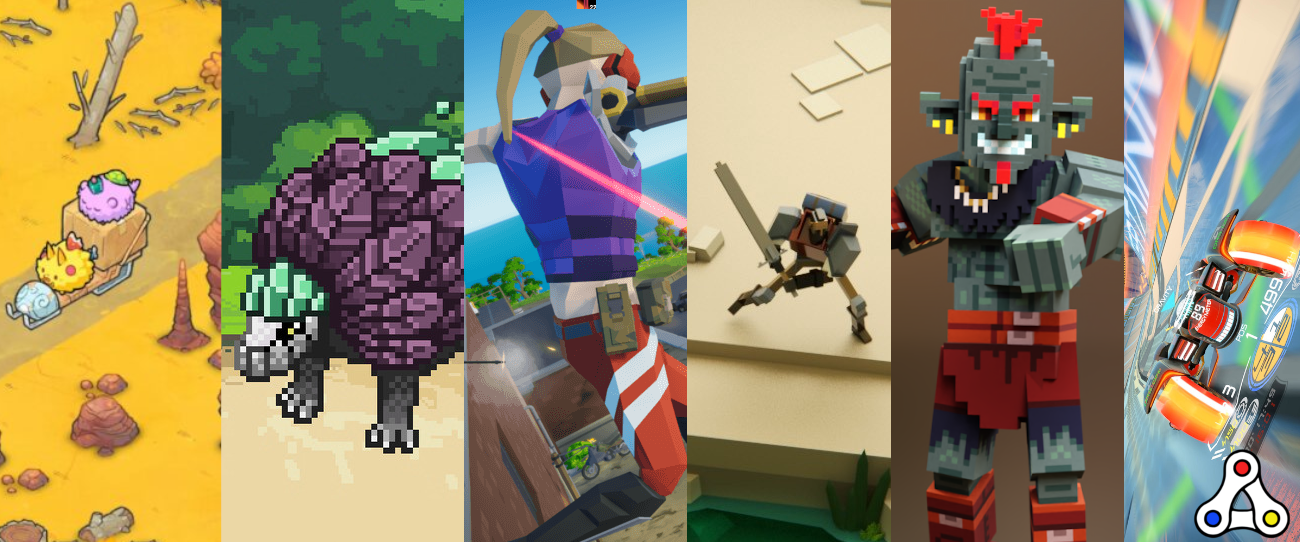
Healthcare is rapidly adopting blockchains as well: YourTechDiet predicts that by 2025, 55% of all healthcare apps will incorporate a blockchain.
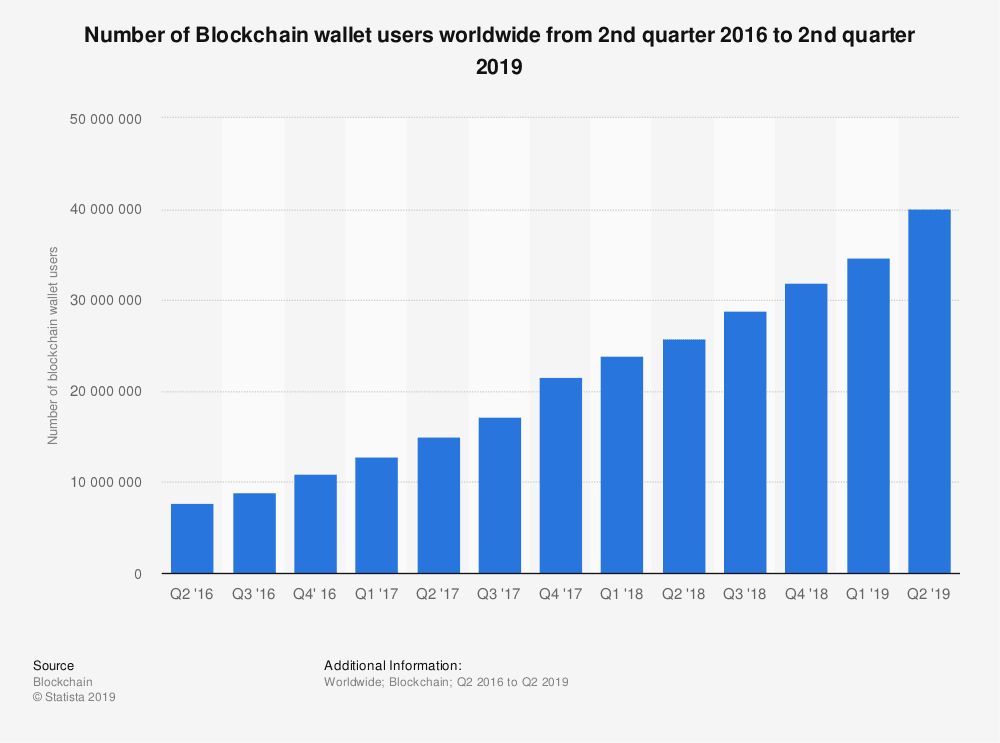
Blockchain app market overview
The market for blockchain applications is far from saturated: the majority of mobile users still don’t use blockchains and only have a vague idea of what they are. This follows the trend of every major new technology – and after a few years, people can’t imagine the world without it.
The same is likely to happen to the blockchain: its benefits won’t remain unnoticed. Many companies already try to build a blockchain application for their benefit and integrate it with their existing system.
According to stateofthedapps.com, there are currently over 2,600 active DApps on the market with around 37,000 daily users. This doesn’t seem like very many; however, that only means there’s great potential. In December 2018, 117 new DApps appeared. The number of blockchain mobile apps is growing rapidly.
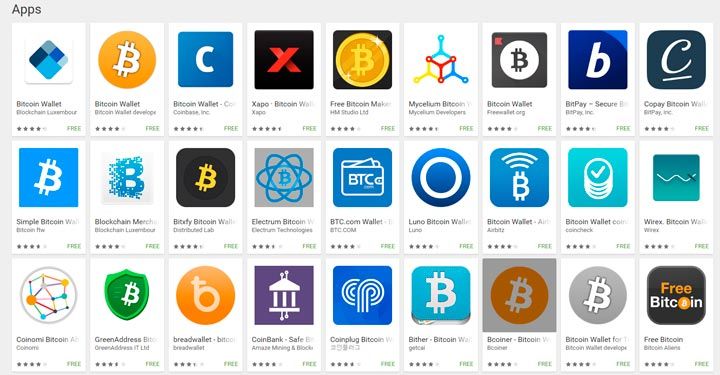
The overall blockchain market is also growing: according to YourTechDiet, the blockchain market will be worth $60 billion by 2020, with finance having the largest share at 60%.
5 examples of blockchain technology in practice
Here are some most interesting examples of using blockchain in different industries. You can use them as ideas for blockchain apps.
Spotify
Uses a blockchain database for decentralized connection between Spotify tracks, artists, and licencing agreements.
Warranteer
Warranteer – is a retail company that uses blockchain to help customers access information on the products they bought, and get service in case the product stopped working.
IBM Blockchain
It’s one of the best blockchain apps that helps logistics companies and businesses with long supply chains to track the status and condition of every product at each stage of the supply process: from the start of production to the distribution stage. Blockchain provides full transparency of records and offers real-time tracking of all parts in terms of their location and condition.
MedRec
MedRec – a healthcare example of a blockchain app that provides secure access to medical records across different providers and actors, like doctors, patients, hospitals, pharmacies, and insurance companies.
Securrency
Securrency – is a trading platform for any kind of cryptocurrencies, however, it also supports traditional assets that can be translated into Securrency tokens and exchange as well.
How to build a blockchain app
Step 1: Clarify your idea
As with every business and product, the idea is the first thing you need to think about before you start to develop a blockchain app. While blockchain is a buzzword nowadays, many businesses can live without it, and some tasks can be done without a blockchain.
You should evaluate if you need a blockchain in the first place. Consider the problems you want to solve with your DApp and start formalizing your idea.
Step 2: Do competitor research
Look at the existing market and analyze what solutions there are. As the market is far from saturated, you’ll definitely find your niche or will find out how to do the same job better than another app.
Step 3: Analyze your options
There are four ways you can build your DApp from a technical standpoint:
- Use an open blockchain for your own application. For example, you can integrate Ethereum or Bitcoin into your mobile solution.
- Create a private network with the help of blockchain software.
- Choose a BaaS (Blockchain as a Service) provider and integrate their cloud service into your app. Amazon, Azure, and Microsoft all offer BaaS products.
- Build your own blockchain network on the most suitable platform for you.
Step 4: Choose a platform
If you need to choose a platform for your blockchain project, have a look at these:
- Ethereum – The most popular platform that allows you to develop a blockchain application and create your own ecosystem with a language called Solidity. You can also create smart contracts with Ethereum.
- Hyperledger – Farbic’s platform for DApps. If you need a corporate tool for exchanging data within your own company, Hyperledger is great for you. To build an app on this platform, you’ll need a team of Go, Java, and JavaScript blockchain app developers.
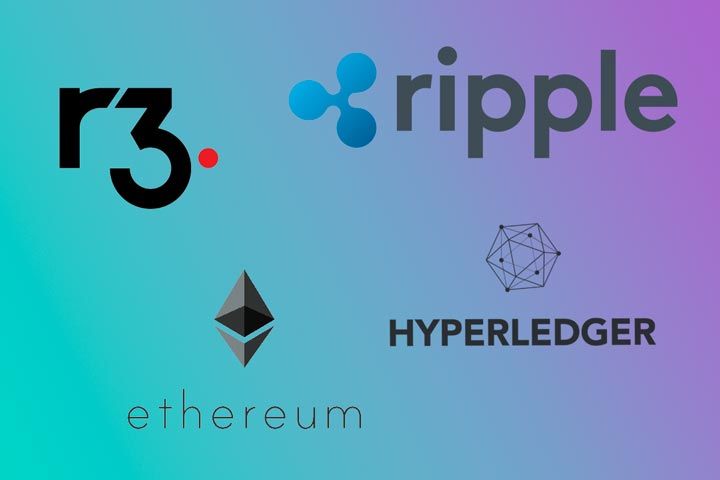
- R3 Corda – A platform that mostly focuses on commerce, healthcare, trade finance, and supply chain. Corda is a platform for creating permissioned blockchains, and the best thing about it is that you can easily integrate it with legacy systems.
- Ripple – This is a great platform for anyone who plans to create a financial tool. Ripple allows you to easily send money anywhere on the planet and connect to banks and payment providers. Ripple is extremely fast and allows up to five transactions per second.
The choice of platform for your blockchain app will influence the skill set you’ll need from your development team. Many platforms allow developers to create a blockchain app in more conventional languages like C++, Java, Kotlin, and JavaScript. Other languages like Solidity and Simplicity aren’t that widespread yet, and few blockchain app development companies can offer developers with such expertise.
This means you may have a hard time supporting your app, or you may need time for your existing team to learn a new language and the principles of blockchain app development. To be fair, Solidity and Simplicity are very similar to common languages, so that shouldn’t be a problem.
Step 5: Start the development process
The process of developing your DApp will look different depending on several aspects:
- What language and platform you choose for your project
- The strategy of interactions and transactions among all the nodes
- Your consensus mechanism
The development process will also depend on whether you connect to an existing blockchain, use a BaaS, or create your own blockchain.

In either case, the development will consist of these stages:
1. Business analysis – At this point, a business analyst extracts requirements, expectations, and business goals during an interview and creates a technical specification. This document describes every detail of the development process, from the people responsible for development and communication to frameworks, libraries, and operating systems.
2. Design – Depending on its complexity, design can take from 8% to 20% of the total development budget.
3. Preparation stage – This consists of setting up the development environment, APIs, backend, and architecture.
4. Development + quality assurance – These steps happen simultaneously as one continuous process. Before deployment, a QA engineer runs a full regression test to check that everything works correctly.
5. Deployment – To be successful, an app must comply with all rules and conditions of the App Store and/or Google Play Store. After deployment, it’s crucial to analyze both performance data and user analytics.
6. Maintenance and support – This includes updates to libraries, frameworks, and operating systems, as well as implementing new features and making changes to the app according to your current business needs.
Step 6: Deploy and maintain your DApp
Deployment is the final stage of DApp development. After the product is ready and you’ve run all final tests, your app is finally revealed to the world through the Google Play Store, Apple App Store, or other app markets. Now you’ll be able to gather data in your DApp and see how people respond to it.
Maintenance is one of the most important blockchain app development services. To maintain its functionality and security, you’ll need to update the app to support new versions of operating systems and libraries.
Programming languages used in blockchain development
The tech stack of creating blockchain-based software will depend on your needs and team. There’s a variety of programming languages that can be used for blockchain development. Here are your options, some are widely used, some are less popular, but get the job done:
- C#
- Python
- Java
- Solidity
- Go
- C++
- Michelson
- Plutus
- Scilla
- Rholang
The choice of a programming language for your blockchain-based app is better decided by an experienced team lead who will be able to match your specific needs to language abilities. Some of these languages are better for smart contracts, some are more suitable for asynchronous code handling. You should also look at the developer market: if you pick a rare language, it may be harder for you to find developers if your current team member leaves the project.
How to integrate a DApp with your business
So far, we’ve discussed the benefits of decentralized blockchain apps and seen a high-level plan for developing a blockchain application. But how exactly can you put such software to use?
Let’s discuss how exactly you can use a blockchain to optimize your digital business operations, increase your revenue, and improve security after you make your own blockchain application.
1. Transactions
Traditional payment gateways are great, but if your target audience is used to cryptocurrency, you can add a blockchain to your app to allow fast, secure, and easy cryptocurrency transactions.
2. Supply chain management
Supply chains consist of many exchanges between different entities. A blockchain can be a great tool for keeping track of all these stages.
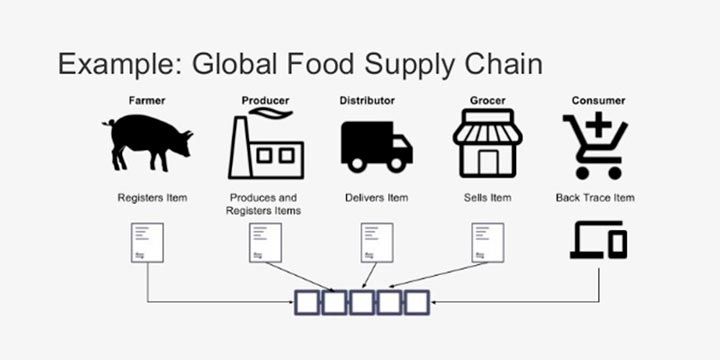
3. Authentication
If you need a secure tool for internal communication or operational management, a blockchain can be a good option. A blockchain provides unparalleled security and only gives access to authorized users. You can control access levels in your own permissioned blockchain.
4. Cloud storage
Blockchain applications can also play a role in decentralized cloud storage. Instead of integrating cloud storage into your app, you can integrate blockchain technologies and provide users with fast, convenient storage.
“Anything that can conceive of as a supply chain, blockchain can vastly improve its efficiency- it doesn’t matter if its people, numbers, data, money.”
Ginni Rometty, CEO IBM
Final thoughts
The blockchain is a powerful technology, and though everybody’s constantly discussing it, few companies have integrated blockchains into their products. You have a chance to enter this unsaturated niche with your own blockchain product or just integrate a blockchain to aid your existing product.
Decentralized apps are more secure than any other type of app; they provide fast international transactions, offer transparent storage, and make sure that data can’t be altered. Blockchain technology is still developing, and you can apply it in lots of ways within new and existing businesses.
If you want to build a blockchain app, don’t hesitate to contact us. At Mobindustry, we can help you build a DApp, consult on your business strategy, and also give you an estimate on blockchain app development costs.


